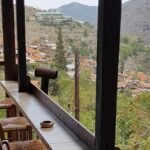Cyprus, a gem in the Mediterranean, showcases a rich tapestry of cultures and histories through its cultural monuments. These structures stand as silent witnesses to the island’s journey, reflecting its influences from various civilizations over the centuries. From ancient ruins to medieval castles, each monument tells a unique story, inviting visitors to delve deeper into the island’s vibrant heritage.

Ancient Kourion: A Glimpse into the Past
The ancient city of Kourion stands proudly on a cliff overlooking the Mediterranean Sea. This archaeological site dates back to the 2nd century BCE and was a significant city-state during its time. Kourion features well-preserved ruins, including a stunning amphitheatre that still hosts performances today, allowing visitors to experience history in an engaging way.
As you wander through Kourion, marvel at the intricate mosaics that depict scenes from mythology and daily life. The House of Eustolios, with its stunning floor mosaics, offers a glimpse into the luxurious lifestyles of the ancient elite. Kourion not only showcases the architectural prowess of the time but also illustrates the cultural blend that characterized Cyprus, influenced by Greek, Roman, and Byzantine civilizations.
St. Hilarion Castle: A Medieval Fortress
Perched high in the mountains, St. Hilarion Castle offers breathtaking views of the surrounding landscape. This medieval fortress, built during the 10th century, served as a royal palace and a defensive stronghold. The castle’s strategic location highlights its importance in protecting the region during the Crusades.
As you explore the castle’s ruins, you can envision the royal life once lived within its walls. The castle’s design, with its narrow corridors and towering walls, reflects the military architecture of the period. Additionally, the castle’s chapel and other structures reveal the blend of secular and religious life during medieval times, showcasing Cyprus’ complex history.
The Byzantine Churches of Troodos: Spiritual Heritage
The Byzantine churches scattered throughout the Troodos Mountains represent Cyprus’ spiritual heritage and artistic achievements. Many of these churches, such as Panagia Asinou and Archangelos Michael, date back to the 12th century and feature stunning frescoes that illustrate biblical stories and saints.
Visiting these churches, you will appreciate the intricate craftsmanship and vibrant colours that adorn their walls. The frescoes not only served a decorative purpose but also functioned as educational tools for the faithful. These monuments stand as a testament to the island’s deep-rooted Christian traditions and the artistry of Byzantine craftsmen, making them essential stops for any cultural exploration of Cyprus.
Paphos Archaeological Park: A World Heritage Site
Designated as a UNESCO World Heritage Site, the Paphos Archaeological Park encompasses a wealth of historical treasures. This site features ancient villas, Roman amphitheatres, and the stunning Tomb of the Kings, a complex of underground tombs dating back to the 4th century BCE.
The highlight of the park is undoubtedly its intricate mosaics, which depict various mythological scenes and daily life. The attention to detail and vibrant colours in these mosaics provide a fascinating insight into the artistic skills of the ancient Cypriots. Paphos serves as a vital link to understanding the cultural evolution of Cyprus through the centuries, blending Greek and Roman influences with local traditions.
The Ledra Street Buffer Zone: A Symbol of Division and Hope
The Ledra Street Buffer Zone in Nicosia stands as a poignant reminder of Cyprus’ recent history. Once a bustling commercial street, it became divided after the Turkish invasion in 1974. Today, the buffer zone serves as a symbol of the island’s ongoing efforts toward reconciliation.
Visitors can walk through the checkpoint and experience the stark contrast between the two sides of the city. The remnants of buildings and abandoned shops tell the story of a vibrant community disrupted by conflict. Efforts to revitalize Ledra Street reflect the hope for unity and healing, making it a significant cultural monument in understanding contemporary Cyprus.
Conclusion: Discovering Cyprus Through Its Monuments
Cyprus’ cultural monuments narrate the island’s diverse history, showcasing influences from various civilizations. Each site, from ancient ruins to medieval castles, contributes to a broader understanding of the island’s identity. By exploring these monuments, visitors gain insights into the rich tapestry of stories that define Cyprus, making it a must-visit destination for history enthusiasts and cultural explorers alike.











